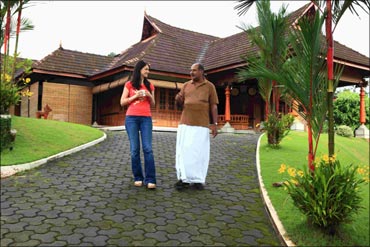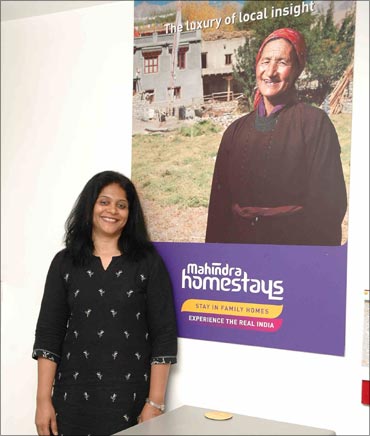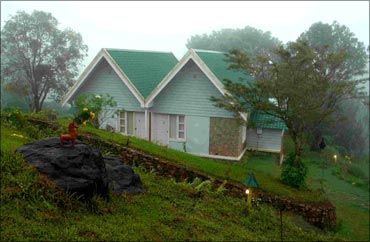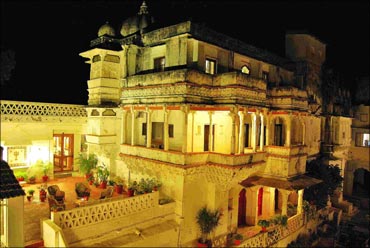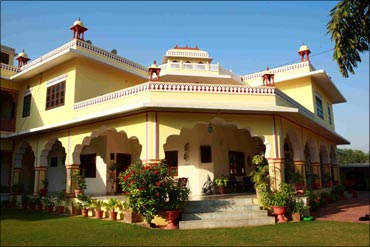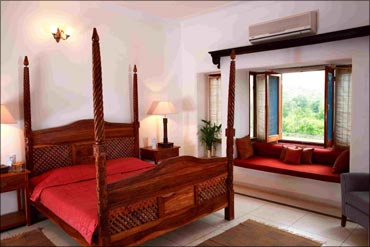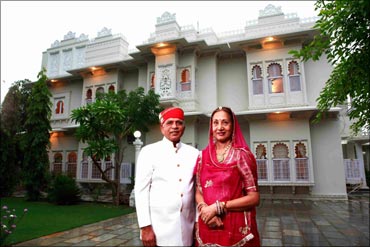 | « Back to article | Print this article |
Homestay: The latest buzz in tourism market
Like the B&B (Bed and Breakfast) accommodation available in Europe, Indian tourism industry has started popularising 'Homestay' for, both, the international as also the domestic travellers.
Homestay refers to accommodation provided in a private home run like a small business by the home owner.
How Homestay differs from hotels is that it offers an insight into the culture, traditions, history and everyday life of an Indian family. By staying with a family, the tourist will get to know the local culture and also get to enjoy authentic Indian home cooked food.
One of the first private players to enter the market is Mahindra Homestays. They have even signed memoranda of understanding with quite a few state governments to jointly promote Homestays. Today, Mahindra has 283 Homestays in 15 states across 51 locations.
In this interview, Vimla Dorairaju, business head, Mahindra Homestays, talks about this emerging market.
Click NEXT to read on . . .
Homestay: The latest buzz in tourism market
Homestays have not yet become popular in India except in a few places. When did Mahindra Holidays decide to explore this space?
Homestay as a concept started in India primarily in Kerala and Rajasthan around 10 years ago when people started opening their heritage and plantation homes to tourists.
Simultaneously various state governments also started seeing great potential in this segment as it is environment friendly (you do not have to build hotels and destroy the environment) and is a responsible tourism option.
This way, you are bringing tourism to villages, plantations and homes without destroying nature. Building infrastructure in certain areas is not practical.
Recently, what gave a boost to Homestay was the Commonwealth Games. The Delhi government expecting a lot of tourists tried to popularise Bed and Breakfast (B&B) and Homestays.
Click NEXT to read on . . .
Homestay: The latest buzz in tourism market
Fundamentally both are the same except that Homestays are more personalised. The difference is in the experience and the interaction with the host.
In the United Kingdom and Europe, B&B accounts for 9-15 per cent of the tourism revenue, and in New Zealand, it accounts for 19 per cent of the entire tourism revenue.
In India, we are looking at the in-bound tourists, which is over 5 million tourists.
So, we knew this segment is going to grow really big.
Which type of tourists prefer Homestays -- the high end or the low end?
We started with the in-bound tourists in mind because Indians had not yet opened up to the idea of staying in somebody else's house when we first started the concept. This is meant for a traveller who wants to experience a culture, food and people.
Among the foreign tourists, our research found that youngsters in the age bracket of 25-35 and older couples, above the age of 50, are the two categories who enjoy Homestays more.
Click NEXT to read on . . .
Homestay: The latest buzz in tourism market
Are you going to target only foreign tourists? Are domestic travellers not interested in Homestays?
We started out with 32 Homestays (largely in Kerala, Rajasthan, Andhra Pardesh and Delhi) targetting foreign tourists. But then that was the time the economic downturn happened and tourism in India 'de-grew'.
When we started, it was projected to grow at 8-15 per cent every year, but in the last 2 years, in-bound tourism reduced. Also, it takes time to grow a new market (Homestay).
So, we decided to target domestic tourists. Our research showed that awareness level of Homestays is very low in India -- below 1 per cent. The advantage we had in India was that people over here knew about Mahindra Holidays compared to the no-awareness level abroad.
We also found that in India those who wanted to make use of Homestay are younger people. When we launched, our average price for a night's stay was Rs 3,500 which was quite expensive for the young crowd. Now, we have changed a bit and the average price per night is Rs 2,000-2,500.
Click NEXT to read on . . .
Homestay: The latest buzz in tourism market
How did you manage to reduce the price?
Initially we had gone for palaces, havelis, tharavads, etc. Now, we have many ordinary houses as Homestays. We have also identified the locations which Indians would love to holiday.
For example, a place like Coorg, which is not such an in-bound destination, is a favourite among Indians.
People from abroad do not like to go to the hills while all Indians like to go to the hills.
So, in 2009, we located around 150 such homes in the hills for the domestic travellers. Today, we have close to 300 homes spread across 15 states in about 50 locations.
Although we cater to both international and domestic tourists, the ratio is 70-30 -- with 70 per cent of them from India.
Click NEXT to read on . . .
Homestay: The latest buzz in tourism market
You said 70 per cent of your customers are domestic. From which area do you get more tourists?
It is from Bengaluru that we get the maximum number of tourists. That is because the awareness level about the product is quite high there. From Bengaluru, they go to Coorg and Kerala primarily.
After Bengaluru comes Mumbai and then Chennai, Delhi and Kolkata.
Rajasthan during the season, Uttarakhand, Himachal, Dharmasala are the destinations for many after Coorg and Kerala.
Fundamentally, tourists go to the same places but here the question is, instead of staying in a hotel, should he stay in a Homestay and get the feel of the place?
Click NEXT to read on . . .
Homestay: The latest buzz in tourism market
What do Indian tourists like about Homestays?
It is the house mainly. For example, heritage homes are a different experience.
The second is the interaction with the host. The host tells the tourists many things about the place which you may not get to hear if you stay in a hotel.
The feedback we got on Homestays is anything between 4.2-4.5/5. It is this experience that is making them recommend this to their friends.
How do you get in touch with these Homes?
They get in touch with us and we also get in touch with them. We get at least one call a day from Homes now that they know we are in the market. We also look for homes from our side. So it works both ways.
It is not necessary that all the homes fall in the same category. We have four types of homes: one is, palaces and heritage homes; second is plantations; third is rural homes; and the fourth category is city homes.
How much do you expect the Homestay segment to grow?
We are working closely with various state governments having signed MoUs with Kerala, Rajasthan, Uttarakhand, Punjab, et cetera where we are going to jointly promote Homestays.
In some places like Ladakh, we have arrangements with NGOs too.
Although it is a product that is not known much, it has a very high potential to grow. We believe it can be a Rs 200 crore (Rs 2 billion) business for us in the next 3-4 years with 1,000 homes.
